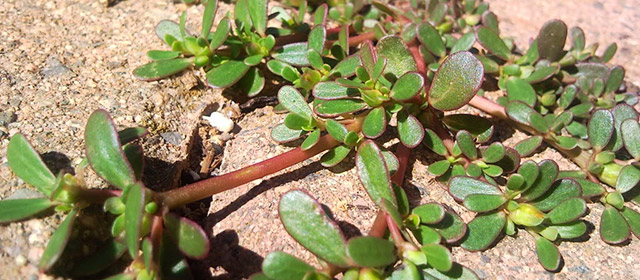Purslane or Portulaca oleracea, is an annual succulent wild edible green that is usually considered a weed. It can be identified by its thick, succulent leaves that alternate on its tender, reddish stems. It has small yellow flowers that can be found year round depending on the weather conditions of the region. While the unappreciative may spray purslane with herbicide, the hungry wilderness survivor will be happy to see this nutritious food source. Here are some of the characteristics and nutrition information of purslane that makes it so valuable to those in the wild.
- Purslane can be found all over the world in a variety of zones and conditions. This makes it ideal as a survival food because if you become familiar with it in your area you will be able to spot it elsewhere.
- Some mistake prostrate spurge for purslane, but spurge has a more sturdy stem, smaller white flowers, and produces a white milky sap from the stem when it is broken. Milky discharges are a good way of determining that a plant should not be eaten. Make sure you are not harvesting spurge which grows in similar locations and conditions as purslane.
- The seeds and the leaves are edible, both cooked and raw. Not only is it easier to consume them raw, but it is more nutritious.
- Purslane is low in calories and cannot be relied upon for energy, but it can provide a variety of essential vitamins and minerals to keep you healthy when dealing with the stresses of survival. Purslane contains more omega 3 fatty acids than any other leafy green vegetable. It is also high in vitamins A, B, C, and E which help boost the immune system, and dietary minerals such as calcium, magnesium, iron, and potassium.
Keep an eye out for purslane in your area, it can grow along hiking trails and even in sidewalk cracks. Adding to your survival menu can help keep you healthy and is one more wild edible that can increase your chances of survival.
If you liked this, you might also enjoy…



My mom grows this in her backyard. These taste great with eggs, and many other foods. Try them raw–they are really good. If you want to grow your own, just find one growing anywhere in the wild or on the sidewalk. Then transplant it or collect the seeds. Then just toss them out in your yard or pots and BAM! You’ll have purslane growing in no time.